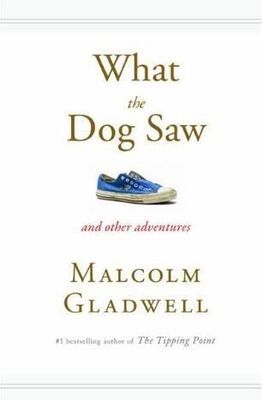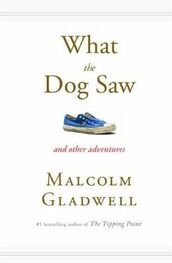Will Nolan Myers succeed at Tellme? I think so, although I honestly have no idea. It’s a harder question to answer now than it would have been thirty or forty years ago. If this were 1965, Nolan Myers would have gone to work at IBM and worn a blue suit and sat in a small office and kept his head down, and the particulars of his personality would not have mattered so much. It was not so important that IBM understood who you were before it hired you, because you understood what IBM was. If you walked through the door at Armonk or at a branch office in Illinois, you knew what you had to be and how you were supposed to act. But to walk through the soaring, open offices of Tellme, with the bunk beds over the desks, is to be struck by how much more demanding the culture of Silicon Valley is. Nolan Myers will not be provided with a social script, that blue suit, and organization chart. Tellme, like any technology startup these days, wants its employees to be part of a fluid team, to be flexible and innovative, to work with shifting groups in the absence of hierarchy and bureaucracy, and in that environment, where the workplace doubles as the rec room, the particulars of your personality matter a great deal.
This is part of the new economy’s appeal, because Tellme’s soaring warehouse is a more productive and enjoyable place to work than the little office boxes of the old IBM . But the danger here is that we will be led astray in judging these newly important particulars of character. If we let personability – some indefinable, prerational intuition, magnified by the Fundamental Attribution Error – bias the hiring process today, then all we will have done is replace the old-boy network, where you hired your nephew, with the new-boy network, where you hire whoever impressed you most when you shook his hand. Social progress, unless we’re careful, can merely be the means by which we replace the obviously arbitrary with the not so obviously arbitrary.
Myers has spent much of the past year helping to teach Introduction to Computer Science. He realized, he says, that one of the reasons that students were taking the course was that they wanted to get jobs in the software industry. “I decided that, having gone through all this interviewing, I had developed some expertise, and I would like to share that. There is a real skill and art in presenting yourself to potential employers. And so what we did in this class was talk about the kinds of things that employers are looking for – what are they looking for in terms of personality. One of the most important things is that you have to come across as being confident in what you are doing and in who you are. How do you do that? Speak clearly and smile.” As he said that, Nolan Myers smiled. “For a lot of people, that’s a very hard skill to learn. But for some reason I seem to understand it intuitively.”
May 29, 2000
WHAT PIT BULLS CAN TEACH US ABOUT CRIME
One sunny winter afternoon, Guy Clairoux picked up his two-and-a-half-year-old son, Jayden, from day care and walked him back to their house in the west end of Ottawa, Ontario. They were almost home. Jayden was straggling behind, and, as his father’s back was turned, a pit bull jumped over a backyard fence and lunged at Jayden. “The dog had his head in its mouth and started to do this shake,” Clairoux’s wife, JoAnn Hartley, said later. As she watched in horror, two more pit bulls jumped over the fence, joining in the assault. She and Clairoux came running, and he punched the first of the dogs in the head, until it dropped Jayden, and then he threw the boy toward his mother. Hartley fell on her son, protecting him with her body. “JoAnn!” Clairoux cried out, as all three dogs descended on his wife. “Cover your neck, cover your neck.” A neighbor, sitting by her window, screamed for help. Her partner and a friend, Mario Gauthier, ran outside. A neighborhood boy grabbed his hockey stick and threw it to Gauthier. He began hitting one of the dogs over the head, until the stick broke. “They wouldn’t stop,” Gauthier said. “As soon as you’d stop, they’d attack again. I’ve never seen a dog go so crazy. They were like Tasmanian devils.” The police came. The dogs were pulled away, and the Clairouxes and one of the rescuers were taken to the hospital. Five days later, the Ontario legislature banned the ownership of pit bulls. “Just as we wouldn’t let a great white shark in a swimming pool,” the province’s attorney general, Michael Bryant, had said, “maybe we shouldn’t have these animals on the civilized streets.”
Pit bulls, descendants of the bulldogs used in the nineteenth century for bull baiting and dogfighting, have been bred for “gameness,” and thus a lowered inhibition to aggression. Most dogs fight as a last resort, when staring and growling fail. A pit bull is willing to fight with little or no provocation. Pit bulls seem to have a high tolerance for pain, making it possible for them to fight to the point of exhaustion. Whereas guard dogs like German shepherds usually attempt to restrain those they perceive to be threats by biting and holding, pit bulls try to inflict the maximum amount of damage on an opponent. They bite, hold, shake, and tear. They don’t growl or assume an aggressive facial expression as warning. They just attack. “They are often insensitive to behaviors that usually stop aggression,” one scientific review of the breed states. “For example, dogs not bred for fighting usually display defeat in combat by rolling over and exposing a light underside. On several occasions, pit bulls have been reported to disembowel dogs offering this signal of submission.” In epidemiological studies of dog bites, the pit bull is overrepresented among dogs known to have seriously injured or killed human beings, and as a result, pit bulls have been banned or restricted in several Western European countries, China, and numerous cities and municipalities across North America. Pit bulls are dangerous.
Of course, not all pit bulls are dangerous. Most don’t bite anyone. Meanwhile, Dobermans and Great Danes and German shepherds and Rottweilers are frequent biters as well, and the dog that recently mauled a Frenchwoman so badly that she was given the world’s first face transplant was, of all things, a Labrador retriever. When we say that pit bulls are dangerous, we are making a generalization, just as insurance companies use generalizations when they charge young men more for car insurance than the rest of us (even though many young men are perfectly good drivers), and doctors use generalizations when they tell overweight middle-aged men to get their cholesterol checked (even though many overweight middle-aged men won’t experience heart trouble). Because we don’t know which dog will bite someone or who will have a heart attack or which drivers will get in an accident, we can make predictions only by generalizing. As the legal scholar Frederick Schauer has observed, “painting with a broad brush” is “an often inevitable and frequently desirable dimension of our decision-making lives.”
Another word for generalization, though, is stereotype, and stereotypes are usually not considered desirable dimensions of our decision-making lives. The process of moving from the specific to the general is both necessary and perilous. A doctor could, with some statistical support, generalize about men of a certain age and weight. But what if generalizing from other traits – such as high blood pressure, family history, and smoking – saved more lives? Behind each generalization is a choice of what factors to leave in and what factors to leave out, and those choices can prove surprisingly complicated. After the attack on Jayden Clairoux, the Ontario government chose to make a generalization about pit bulls. But it could also have chosen to generalize about powerful dogs, or about the kinds of people who own powerful dogs, or about small children, or about backyard fences – or, indeed, about any number of other things to do with dogs and people and places. How do we know when we’ve made the right generalization?
Читать дальше







